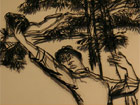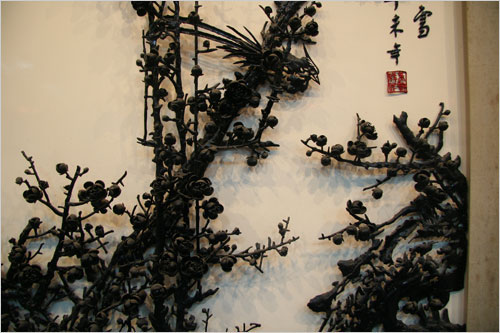| Videos | • Latest |
|
• Feature | • Sports | • Your Videos |
Ancient crafts, modern world

 0 Comment(s)
0 Comment(s) Print
Print E-mail
CRI, November 18, 2011
E-mail
CRI, November 18, 2011

Afterwards, the pulp is washed in water in order to further break it down into useable fibers. This is still done by hand and is very tiring. The water creates a drag force which pulls apart the fibers, but it also is very straining on the muscles.
Next, the pulp is mixed into water to make a soupy, porridge-like mixture. A sheet of bamboo allows water to sluice through while keeping the pulp on top. A worker will slide the bamboo sheet through the water and then tilt it in such a way that the mixture will run down the sheet and back into the mixture, leaving an even coating of pulp on the sheet as the water drains through.
Finally, the sheets will be peeled off the bamboo after drying, and placed onto heated slabs of metal to cook out any remaining water and harden the pulp sheets into paper. Even though this process sounds rough and course, the quality of the paper is really extraordinary. It looks like the finest paper used for calligraphy – thick, solid white, durable and strong.
In fact, this workshop is famous throughout all of China. So famous, that this worker, Wang Shiba, even participated in the Opening Ceremony of the 2008 Olympic Games in Beijing, performing his paper-making skills.
China obviously places great importance on its folk art national history. However, the reality of the job market could force workers out of these crafts if protections or economic securities are not put into place.






Go to Forum >>0 Comment(s)